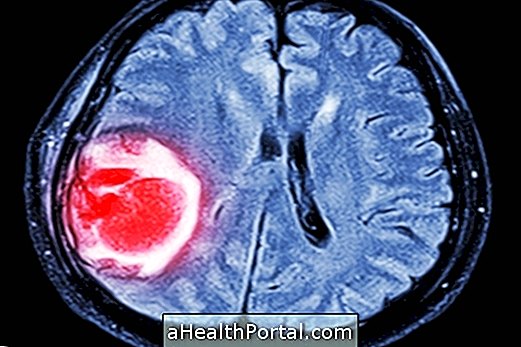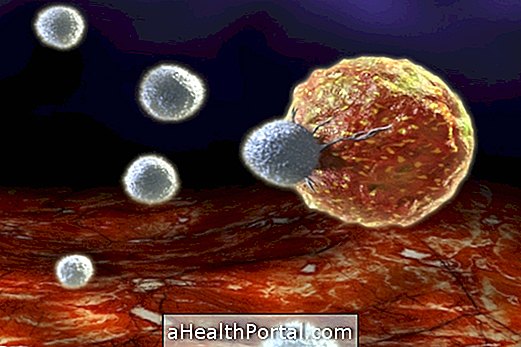Bladder cancer is formed when there is growth of malignant cells in the wall of this organ, which is in direct contact with the urine, mainly due to smoking and constant exposure to chemicals such as dyes, pesticides or arsenic, for example.
The main signs and symptoms caused are:
- Blood in the urine;
- Sensation of pain or burning when urinating;
- Pain in the lower region of the belly;
- Increased need to urinate;
- Sudden urge to urinate;
- Urinary incontinence;
- Fatigue;
- Lack of appetite;
- Weight loss.
Bleeding in the urine is the most important symptom, but it is not always visible because it can be microscopic and detected only in the urine test.

However, these signs and symptoms are not cancer specific and are more common in other urinary tract diseases, such as urinary tract infection, kidney stones, or urinary incontinence, so they should be differentiated by a general practitioner or urologist.
In man, another important suspicion should also be prostate cancer, which can cause a clinical picture very similar to that of the bladder. Understand better what are the main causes of blood in the urine and bladder pain, and what to do if they appear.
Main causes
Through the bladder pass many toxic substances that are eliminated from the bloodstream through the urine, with which we come into daily contact by food consumption, breathing and contact with the skin.
These substances, present in cigarettes, pesticides, dyes and medicines, such as cyclophosphamide and arsenic, for example, come into contact with the wall of the bladder, and can trigger the formation of cancer cells.
How is the diagnosis made?
In the presence of signs and symptoms that indicate bladder cancer, it is important to consult with the urologist for clinical evaluations, physical examination and laboratory tests, such as urinalysis, ultrasound of the urinary tract, resonance or computed tomography, and cystoscopy, which consists of introducing a thin tube through the urethra to look inside the bladder and collect biopsies.
Tumor biopsy is very important because it will determine whether it is a benign tumor or a cancer with malignancy characteristics that can spread through the body through metastases.
Next, the next steps to define the severity and treatment of bladder cancer depend on the stage of cancer development:
- Stage 0 - tumors located only in the lining of the bladder;
- Stage 1 - Tumor crosses the bladder lining but does not reach the muscle layer;
- Stage 2 - tumor that reaches the muscle layer of the bladder;
- Stage 3 - tumor that goes beyond the muscle layer of the bladder reaching the tissues around it;
- Stage 4 - The tumor spreads to nearby lymph nodes and organs, or to distant sites.
The stage of the cancer depends on how long the person has developed it, so it is very important that the diagnosis and the start of the treatment are made as soon as possible.
How to treat
Treatment of bladder cancer depends on staging and degree of organ involvement, and can be done through surgery, chemotherapy, radiation therapy and immunotherapy, as directed by your doctor.
Generally, in stages 0 and 1 of bladder cancer, treatment consists of removal of the tumor and administration of chemotherapy, radiation therapy or bladder immunotherapy. Stages 2 or 3 may be treated with partial or complete withdrawal of the bladder, in addition to the administration of chemotherapy in conjunction with radiation therapy.
However, in stage 4 bladder cancer, due to the presence of matastases and a small chance of cure, surgery is usually not done, and chemotherapy and other treatments are indicated to alleviate the symptoms of the disease and allow a longer life . Learn more about key treatment options for bladder cancer.
























